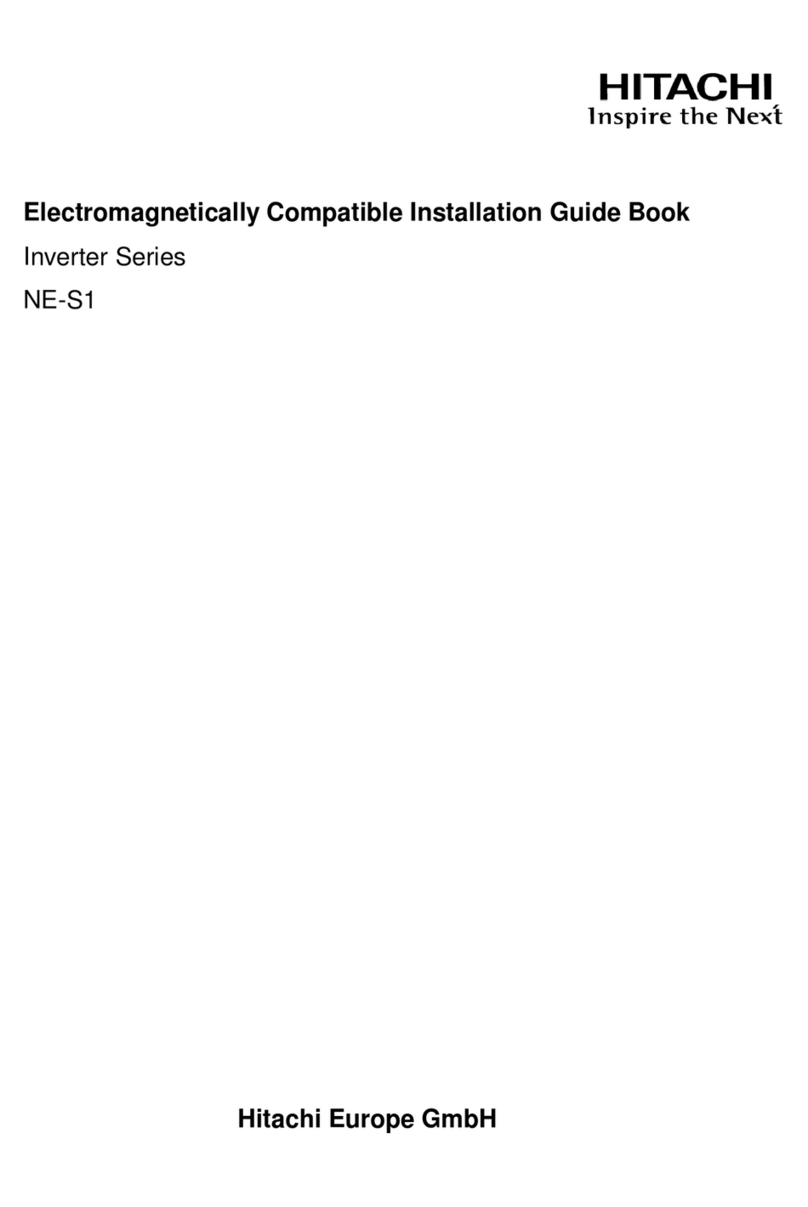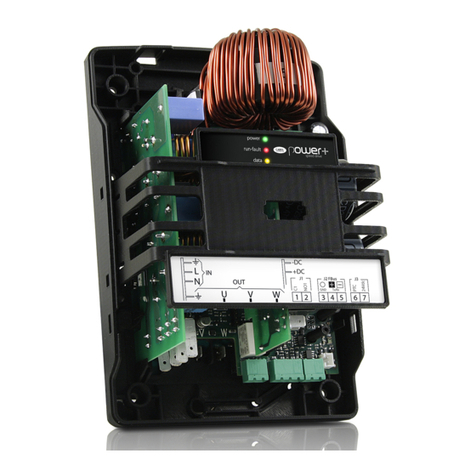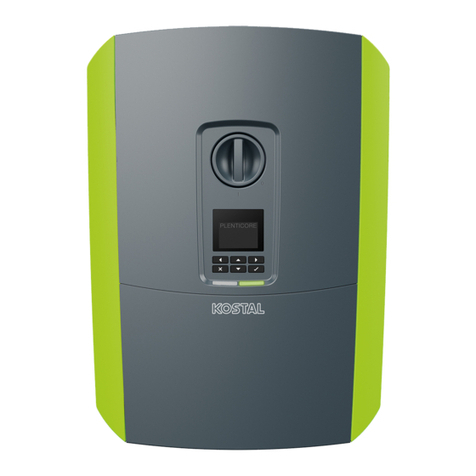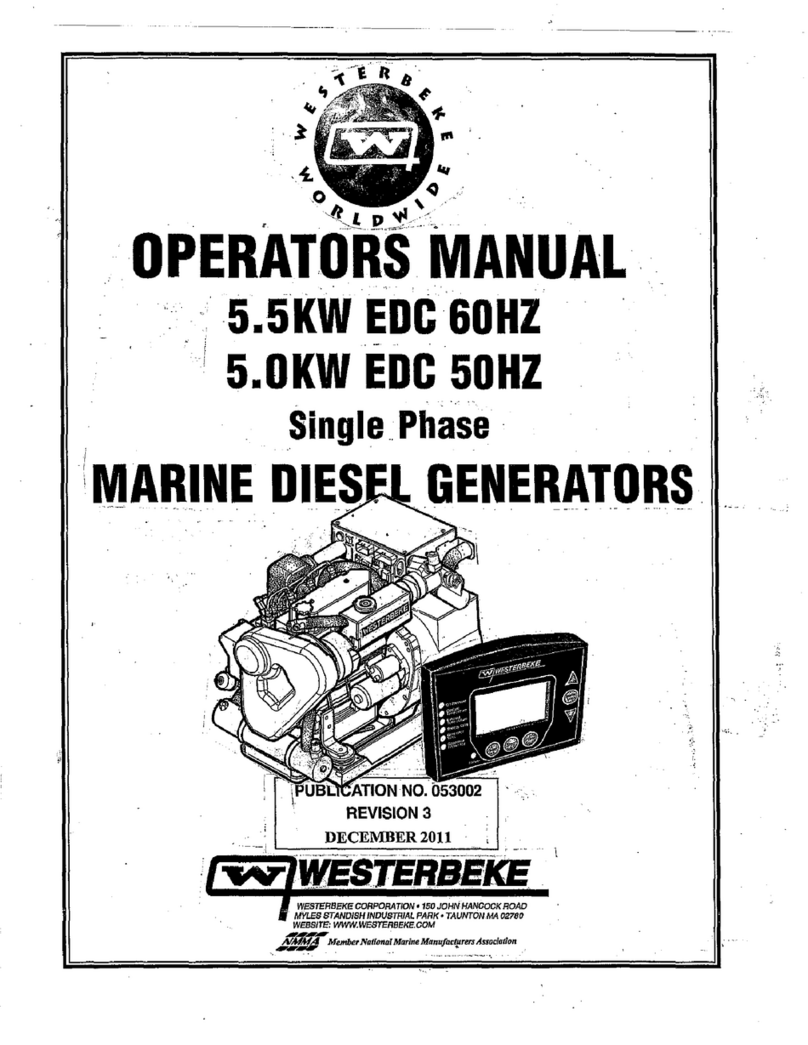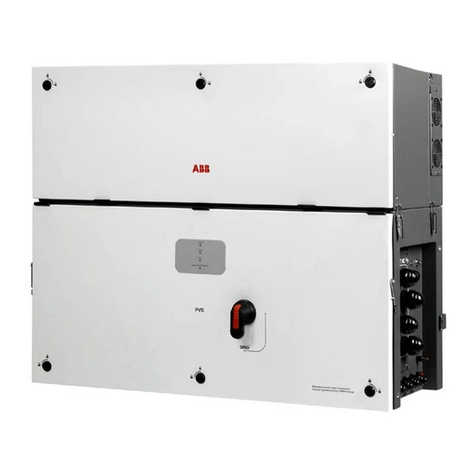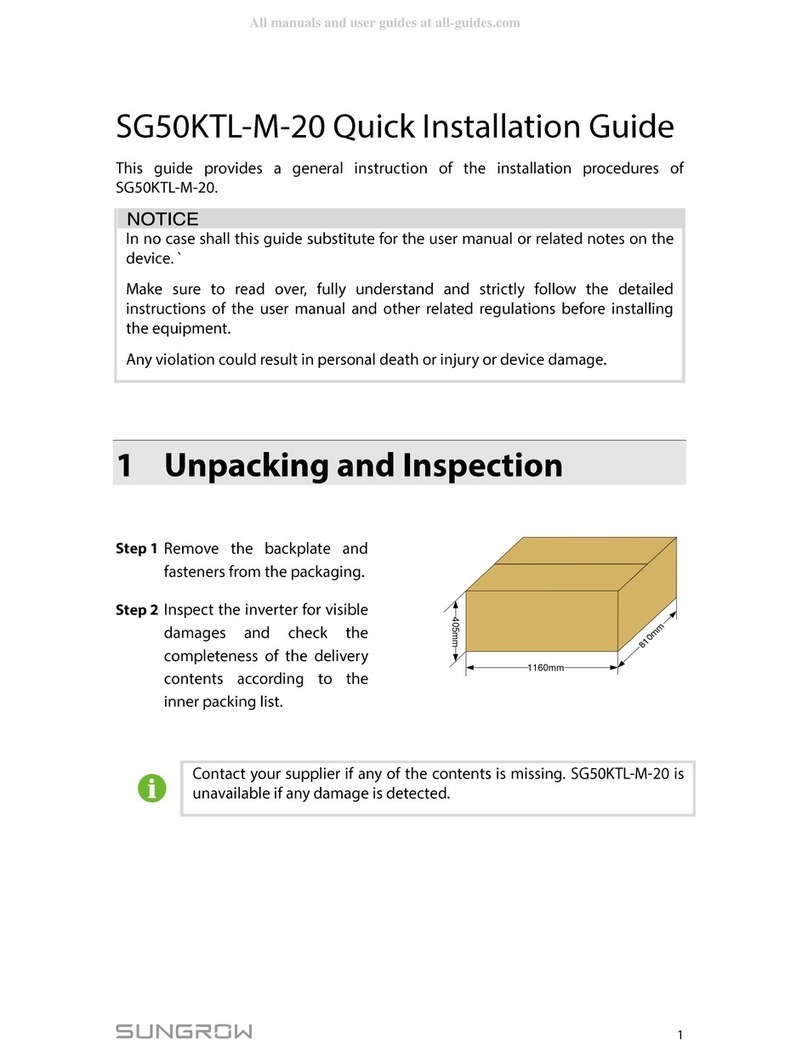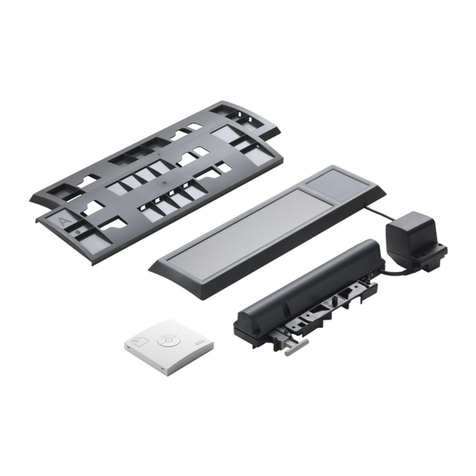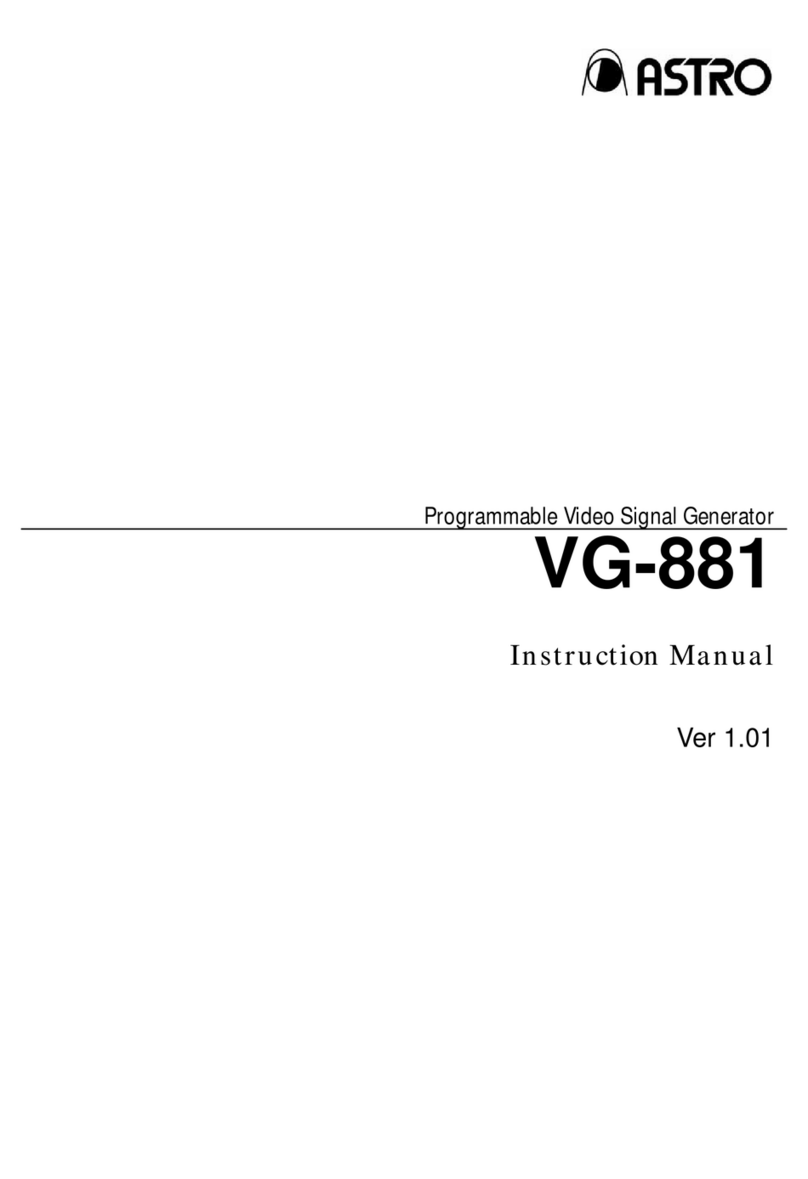Soligent S600 Series User manual

S600,S600R Series
Pure Sine Wave Inverter
User’s Manual

List of contents
1. Important Safety Instructions……………………………………………… 1
1-1 General Safety Precautions…………………………………………… 1
1-2 Precautions When Working With Batteries………………………….. 1
2. Features………………………………………………………………………... 2
2-1 Application………………………………………………………………. 2
2-2 Electrical Performance………………………………………………… 3
2-3 Mechanical Drawings………………………………………………….. 4
3. Introduction…………………………………………………………………… 5
3-1 Front Panel Operations………………………………………………... 5~6
3-2 Rear Panel Operations………………………………………………… 7~8
3-3 Installation………………………………………………………………. 9
3-4 Quick hook – up and testing…………………………………………... 10~11
3-5 AC Safety Grounding………………………………………………….. 12~13
3-6 Making DC Wiring Connections………………………………………. 13~14
3-7 Inverter Operation……………………………………………………… 15
4. Troubleshooting guide……………………………………………………… 16
5. Maintenance…………………………………………………………………… 17
6. Warranty……………………………………………………………………….. 17
7. Appendices……………………………………………………………………. 18
7-1 CE (LVD EN60950) Declaration of Conformity……………………... 18
7-2 FCC (Class B) Declaration of Conformity…………………………… 19
7-3 e-mark (e13 020866) Declaration of Conformity…………………… 20~21
7-4 UL (UL458) NOTICE OF COMPLETION 22
©Copyright :This manual is the copyright of COTEK Electronic lnd. Co., Ltd. And may not be reproduced or copied
without the express permission of the owner.
A0-R603-30001
1

1. Important Safety Instructions
WARNING!
Before you install and use Your Inverter, be to read and
save these safety instructions.
1-1. General Safety Precautions
1-1-1. Do not expose the Inverter to rain, snow, spray, bilge or dust.
To reduce risk of hazard, do not cover or obstruct the ventilation
openings. Do not install the Inverter in a zero-clearance compartment.
Overheating may result.
1-1-2. To avoid a risk of fire and electronic shock. Make sure that existing
wiring is in good electrical condition; and that wire size is not
undersized.
Do not operate the Inverter with damaged or substandard Wiring.
1-1-3. This equipment contains components which can produce arcs or
sparks. To prevent fire or explosion do not install in compartments
containing batteries or Flammable materials or in locations which
require ignition protected equipment. This includes any space
containing gasoline-powered machinery, fuel tanks, or joints, fittings,
or other connection between components of the fuel system.
1-2. Precautions When Working with Batteries
1-2-1. If battery acid contacts skin or clothing, wash immediately with soap
and water. If acid enters eye, immediately flood eye with running
cold water for at least 20 minutes and get medical attention
immediately.
1-2-2. Never smoke or allow a spark or flame in vicinity of battery or Engine.
1-2-3. Do not drop a metal tool on the battery. The resulting spark or
short-circuit on the battery of other electrical part may cause an
explosion.
1-2-4. Remove personal metal items such as rings, bracelets, necklaces,
and watches when working with a lead-acid battery,
A lead-acid battery produces a short-circuit current high enough to
weld a ring or the like to metal, causing a severe burn.
1

2. Features
Pure sine wave output (THD < 3%)
Output frequency:50 / 60Hz switch selectable
Input & output fully isolation design
High efficiency 88~94%
Capable of driving highly reactive & capacitive loads at start moment.
Tri-Color indicators display input voltage & output load level
Loading controlled cooling fan
Advanced microprocessor
Protection:Input low voltage Overload Short circuit
Low battery alarm Input over voltage Over temperature
2-1. Application
2-1-1. Power tools – circular saws, drills, grinders, sanders, buffers, weed
and hedge trimmers, air compressors.
2-1-2. Office equipment – computers, printers, monitors, facsimile machines,
scanner.
2-1-3. Household items – vacuum cleaners, fans, fluorescent and
incandescent lights, shavers, sewing machines.
2-1-4. Kitchen appliances – coffee makers, blenders, ice markers.
2-1-5. Industrial equipment – metal halide lamp, high – pressure sodium lamp.
2-1-6. Home entertainment electronics – television, VCRs, video games,
stereos, musical instruments, satellite equipment.
2

2-2. Electrical Performance
Specification Model No.
Item S600-112 S600-124 S600-148 S600-212 S600-224 S600-248
Continuous Output Power 600W
Maximum Output Power (3Min.) 680W
Surge Rating 800W
Input voltage 12V 24V 48V 12V 24V 48V
Output Voltage 100 / 110 / 120V ± 3% 220 / 230 / 240V ± 3%
Frequency
(Switch Selectable) 50 / 60Hz ± 0.05%
Efficiency (full load) 87.0% 90.0% 92.0% 90.0% 93.0% 94.0%
No Load Current Draw 0.87A 0.43A 0.23A 0.83A 0.43A 0.22A
Output Waveform Pure Sine Wave ( THD < 3% )
Output voltage Regulation 100 / 110 / 120V RMS –10%/+4% 220 / 230 / 240V RMS –10%/+4%
Input Voltage Regulation 10.5-15
VDC
21.0-30
VDC
42-60
VDC
10.5-15
VDC
21.0-30
VDC
42-60
VDC
Input Level Indicator
Load Level Indicator Red / Orange / Green LED
Failure Indicator Red LED
Protection Overload, Short Circuit, Reverse Polarity (Fuse),
Over / Under Input Voltage, Over Temperature.
Safety UL458 EN60950
EMC FCC Class B
EN50081-1:1992
EN50082-1:1992
EN55022B:1994
EN61000-4-2:1995
EN61000-4-3:1996
ENV50204:1995
e-Mark
e13-020866
Operating Temperature Range 0 – 40 ℃
Storage Temperature Range -30℃to 70℃
Cooling Loading controlled cooling fan
Dimensions 295(L) x 180(w) x 72(H) mm / 11.61(L) x 7.09(W) x 2.83(H) Inch
Weight 2.7 kgs. / 5.4 Lbs.
★★ Model S600R differs from Model S600 by the addition of a remote ON/OFF port . ★★
3

2-3. Mechanical Drawings
PURE SINE WAVE INVERTER
4

3. Introduction
This power inverter series is a the member of the most advanced line of mobile
AC power systems available.
To get the most out of the power inverter, it must be installed and used properly.
Please read the instructions in this manual before installation and operation this
model.
3-1. Front Panel Operations:
3-1-1. Front view:
PURE SINE WAVE INVERTER
3-1-2. ON / OFF switch:
Power ON / OFF switch, leave in the OFF position during installation.
3-1-3. Input Level:Display Input Voltage
LED Status DC 12V DC 24V DC 48V
Red Blink (Slow) 10.5~10.9 21.0~21.8 42.0~43.6
Red 10.9~11.3 21.8~22.6 43.6~45.2
Orange 11.3~12.0 22.6~24.0 45.2~48.0
Green 12.0~14.0 24.0~28.0 48.0~56.0
Orange Blink 14.0~14.7 28.0~29.4 56.0~58.8
Red Blink (Fast) 14.7!29.4!58.8!
5

3-1-4. Load Level:Display AC Load Watts
LED Status Load Condition
Dark 0 ~ 30W
Green 30W ~ 200W
Orange 200W ~ 450W
Red 450W ~ 580W
Red Blink Over 580W
3-1-5. Fault:Display fault status
Red LED Conditions Status
Blink (Fast) OVP
Blink (Slow) UVP
Blink (Intermittently) """"""OTP
Blink (Solid) OLP
3-1-6. AC outlet (Outlet sockets available):
North America (GFCI) North America
Continental European (SCHUKO) Australia / New Zealand
United Kingdom Universal
6

3-2. Rear Panel Operations:
WARNING: REVERSE POLARITY
WILL DAMAGE UNIT
CHASSIS
GROUND
REMOTE
PORT
DC INPUT
NEG(-) POS(+)
POS(+)
DC INPUT
WARNING: REVERSE POLARITY
WILL DAMAGE UNIT
CHASSIS
GROUND
NEG(-)
3-2-1. Remote ON / OFF switch for S600R model only.
3-2-1-1. In order for the Remote ON / OFF switch to operate inverter,
ON / OFF switch on the Front Panel must be off.
3-2-1-2. Make sure the remote control contact is off.
3-2-1-3. Using 14 ~ 20 AWG wire, make remote ON / OFF connection
from the Rear Panel Terminal marked “REMOTE PORT” to a
remote control contact. If the remote control contact is in low
impedance ( short ) state, the inverter will be turned ON and if
the remote control contact is in high impedance ( open ) state,
the inverter will be turned OFF.
7

3-2-2. Ventilation window:
Do not obstruct, allow at least 3 inch for proper air flow.
3-2-3. Input terminals:
Connect to 12v / 24V / 48V battery or other 12V / 24V / 48V power
source.
【+】is positive,【-】is negative. Reverse polarity connection will
blow internal fuse and may damage inverter permanently.
WARNING!
Do not connect the 12V model to a 24 battery,
The unit will be destroyed immediately.
3-2-4. Chassis ground or to vehicle chassis using #8 AWG wire.
WARNING!
Operation of the inverter without a proper ground
connection may result in an electrical safety hazard.
8

3-3. Installation:
Where to install. The power inverter should be installed in a location that
Meets the following requirements:
3-3-1. Dry – Do not allow water to drip or splash on the inverter.
3-3-2. Cool – Ambient air temperature should be between 0℃and 33℃, the
cooler the better.
3-3-3. Safe – Do not install in a battery compartment or other areas where
flammable fumes may exist, such as fuel storage areas or engine
compartments.
3-3-4. Ventilated – Allow at least one inch of clearance around the inverter
for air flow. Ensure the ventilation openings on the rear and bottom
of the unit are not obstructed.
3-3-5. Dust – Do not install the Inverter in a dusty environments
where are dust, wood particles or other filings/shavings are present.
These dust can be pulled into the unit when the cooling fan is
operating.
3-3-6. Close to batteries – Avoid excessive cable lengths but do not install
the Inverter in the same compartment as batteries.
Use the recommended wire lengths and sizes (see section 3-6).
Also do not mount the Inverter where it will be exposed to the
gases produced by the battery.
These gases are very corrosive and prolonged exposure also will
damage the Inverter.
WARNING!
Shock Hazard. Before proceeding further, carefully
check that the Inverter is NOT connected to any
batteries, and that all wiring is disconnected from any
electrical sources. Do not connect the output terminals
of the Inverter to an incoming AC source.
9

3-4. Quick hook – up and testing:
For a quick hook – up of the power inverter to check its performance
before going ahead with installation, please follow these guidelines:
3-4-1. Unpack and inspect the power inverter to check its performance
switch in the OFF position.
3-4-2. Connect the cables to the power input terminals on the rear panel of
power inverter. The red terminal is positive (+) and black terminal
is negative (-). Insert the cables into the terminals and tighten
screws to clamp the wires securely.
WARNING!
You may observe a spark when you make this
connection since current may flow to charge
capacitors in the power inverter.
Do not make this connection in the presence of
Flammable fumes. Explosion or fire may result.
WARNING!
Make sure all the DC connections are tight (torque
to 9 – 10 ft-lbs, 11.7 – 13 Nm). Loose connections
overheat and could result in a potential hazard.
10

3-4-3. Before proceeding further, carefully check that cable you have
connected does tie negative terminal of inverter to the negative
output power source.
CAUTION !
Reverse polarity connection will blow a fuse in inverter
and may permanently damage the inverter.
Damage caused by reverse polarity connection is not
covered by warranty.
3-4-4. Connect the cable from the negative terminal of the inverter to the
negative terminal of the power source. Make a secure connection.
3-4-5. Set the power switch to the “ON” position and the buzzer will send
out “Beep sounds” sounds at the moment the inverter will do
self-diagnosis and the LED’s indicators will also appear various
colors. Finally the buzzer will send out another “Beep” sound and
the Input Level LED indicators will turn to “Green” color and the
inverter starts working successfully.
3-4-6. Set the power switch to the OFF position, the inverter stops and all
the lights that are On, and then go Off.
3-4-7. Set power inverter switch to the ON position and turn the test load
on. The inverter should supply power to the load. If you plan to
accurately measure the true output r.m.s. voltage of inverter, a meter
such ad FLUKE 45 BECKMAN 4410 or TRIPLETT 4200 must be
used.
11

3-5. AC Safety Grounding:
During the AC wiring installation, AC input and output ground wires are
connected to the inverter. The AC input ground wire must connect to the
incoming ground from your AC utility source.
The AC output ground wire should go to the grounding point for your loads
( for example, a distribution panel ground bus ).
3-5-1. Neutral Grounding (GFCI’S):
3-5-1-1. 120V models:The neutral conductor of the AC output circuit
of the Inverter is automatically connected to the safety
ground during inverter operation. This conforms to National
Electrical Code requirements that separately derived AC
sources (such as inverter and generators) have their neutral
conductors tied to ground in the same way that the neutral
conductor from the utility is tied to ground at the AC breaker
panel. For models configured with a transfer relay, while AC
utility power is presenting and the Inverter is in bypass
mode, this connection (neutral of the Inverter’s AC output
to input safety ground) is not present so that the utility
neutral is only connected to ground at your breaker panel,
as required.
WARNING!
Risk of electronic shock. Use only Pass and Seymour, type
2091-W, 2094-W,GFCI receptacles.
Other types may fail to operate properly when connected to
this inverter equipment .
3-5-1-2. 230V models:There is no connection made inside the
Inverter from either the line or neutral conductor to the safety
ground.

Ground Fault Circuit Interrupters (GFCI):
Installations in Recreational Vehicles (for North American approvals) will
require GFCI protection of all branch circuit connected to the AC output of
the hardwire terminal equipped Inverter. In addition, electrical codes
require GFCI protection of certain receptacles in residential installations.
While the pure sine wave output of the Inverter is equivalent to the
waveform provided by utilities, compliance with UL standards requires us to
test and recommend specific GFCI.
Cotek has tested the following GFCI – protected 20A receptacles and found
that they functioned properly when connected to the output of the Inverter.
WARNING!
Do not operate the power inverter without connecting
it to ground.
Electrical shock hazard may result.
3-6. Making DC Wiring Connections:
Follow this procedure to connect the battery cables to the DC input terminals
on the Inverter. Your cables should be as short as possible ( ideally,
less than 10 feet / 3 meters ) and large enough to handle the required
current in accordance with the electrical codes or regulations applicable to
your installation.
Cables that are not an adequate gauge (too narrow) or are too long will
cause decreased inverter performance such as poor surge capability and
frequent low input voltage warnings and shutdowns.
These low input voltage warnings are due to DC voltage drop across the
cables from the inverter to the batteries.
The linger and narrower these cables, the greater the voltage drop.
WARNING!
The installation of a fuse must be on positive cable.
Failure to place a fuse on “+” cables running between
the inverter and battery may cause damage to the
inverter and will void warranty.
13

Increasing your DC cable size will help improve the situation.
Cotek recommends the following cables for optimum inverter performance
( apply both 120V and 230V versions )
Model No Wire AWG Inline Fuse
S600-112 # 4 100A
S600-212 # 4 100A
S600-124 # 6 50A
S600-224 # 6 50A
Also, use only high quality copper wiring and keep cable length short, a
maximum of 3-6 feet.
BATTERY
-+
INLINE FUSE
S600
14

3-7. Inverter Operation:
To operate the power inverter, turn it on using the ON / OFF switch on the
Front panel. The power inverter is now ready to deliver AC power to your
loads.
If you are operating several loads from the power inverter, turn them on
separately after the inverter has been turned on.
This will ensure that the power inverter does not have to deliver the starting
currents for all the loads at once.
3-7-1. Controls and indicators:
The ON / OFF switch turns the control circuit in the power inverter
on and off. It does not disconnect power from the power inverter.
The Inverter operates from an input voltage ranging from:
10.5 to 15.0 VDC for 12V models
21.0 to 30.0 VDC for 24V models
42.0 to 60.0 VDC for 48V models
The Inverter will indicate high and low DC voltage conditions as
follows:
Model Dc Input over
Voltage shut-down Dc Input under
Voltage alarm Dc Input under
Voltage shut-down
S600-112
S600-212 15.3 11.0 10.5
S600-124
S600-224 30.6 22.0 21.0
S600-148
S600-248 61.2 44.0 42.0
15

4. Troubleshooting guide:
WARNING!
Do not open or disassemble the S600 Inverter.
Attempting to service the unit yourself may result in a
risk of electrical shock or fire.
Problems and Symptoms Possible Cause Solutions
No output voltage, ”FAULT" LED lights RED.
a. Fault level light is
blinked fast. Over input voltage.
( OVP ) Check input voltage.
Reduce input voltage.
b. Fault level light is
blinked slowly.
Low input voltage.
( UVP )
Recharge battery.
Check connections
and cable.
c. Fault level light is
blinked Intermittently.
Thermal shutdown.
( OTP )
Improve ventilation.
Make sure ventilation
openings in inverter
are not obstructed.
Reduce ambient
temperature.
d. Fault level light is ON. Short circuit or Wiring
error.
Overload.
( OLP )
Check AC wiring for
short circuit.
Reduce load.
16

5. Maintenance:
Very little maintenance is required to keep your inverter operating properly.
You should clean the exterior of the unit periodically with a damp cloth to
prevent accumulation of dust and dirt.
At the same time, tighten the screws on the DC input terminals.
6. Warranty:
We warrant this product against defects in materials and workmanship for a
period of 24 months from the date of purchase and will repair or replace any
defective Power Inverter when directly returned, postage paid, to us.
This warranty will be considered void if the unit has suffered any obvious
physical damage or alteration either internally or externally and does not
cover damage arising from improper use such as plugging.
The unit into an unsuitable power sources attempts to operate products with
excessive power consumption requirements, or use in unsuitable environments.
This is the only warranty that the company makes.
No other warranties express or imply including warranties of merchantability
and fitness for a particular purpose.
Repair and replacement are your sole remedies and the company shall not be
liable for damages, whether direct, incidental, special or consequential, even
though caused by negligence or other fault.
17

7-1. CE (LVD EN60950) Declaration of Conformity:
18
This manual suits for next models
1
Table of contents
Popular Inverter manuals by other brands
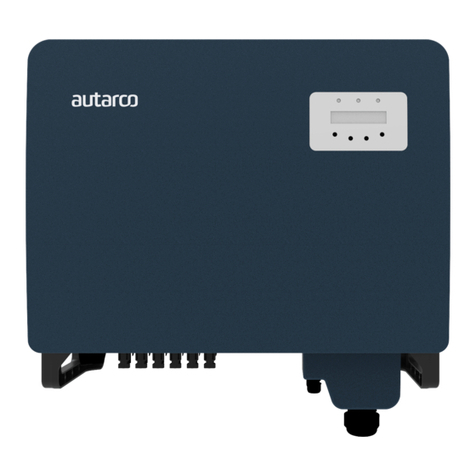
Autarco
Autarco XLX-MII Series Installation and operation manual
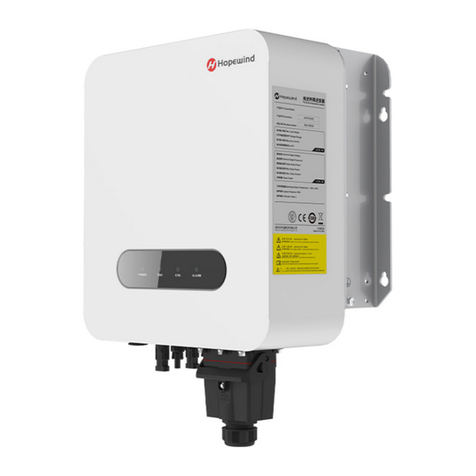
Hopewind
Hopewind hopeSun Series user manual

CyberPower
CyberPower Nitram ELITE PRO Series user manual

DAB
DAB MCE-55/C Instruction for installation and maintenance
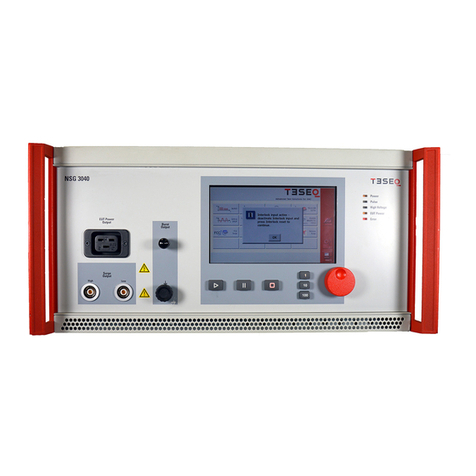
Teseq
Teseq NSG 3040 user manual
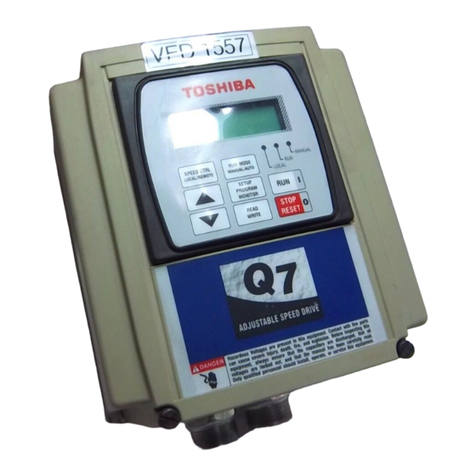
Toshiba
Toshiba Q7 Flow Installation and operation manual

